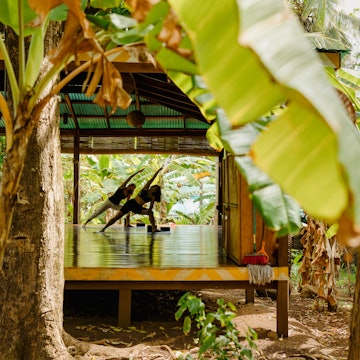

The gorgeous cliffs and rock formations of the Jurassic Coast were formed hundreds of millions of years ago. artherng/Getty Images
Take a step back in time – some 185 million years back in time, to be precise – along the wild and rugged Jurassic Coast in Southwest England.
England’s only natural World Heritage Site, this 95-mile (153km) portion of coast has a name that reveals its huge geological significance. Running from Exmouth in Devon to Studland Bay in Dorset, its unique rock formations and fossil-rich cliffs draw visitors from all over the world.
And if rocks aren’t your thing, the pristine beaches, charming seaside towns and wide-ranging adventure experiences on offer will appeal to just about every kind of traveler.
Here’s all you need to know about visiting the Jurassic Coast, and the best things to do on this beautiful stretch of sand and sea.
What is the Jurassic Coast?
To understand what makes the Jurassic Coast so special, we need to rewind a bit. Well, more than a bit – think 252 million years.
The rocks along this stretch of shoreline offer an almost complete record of the Mesozoic Era (from roughly 250 to 65 million years ago). The area's geology provides visible traces of the enormous environmental changes that played out over millions of years, starting with the Triassic Period (from 252 to 201 million years ago), when this part of Britain was a baking desert and the shifting of the earth’s crust deposited layers of sediment on top of each other.
Moving west along the coast, you’ll find rocks formed during the Jurassic Period (201 to 145 million years ago), when water levels rose to create a tropical sea. This was the height of the "age of the dinosaurs," and many fossils of marine animals from this period have been found on the coast around Lyme Regis.
When the sea levels fell and then rose again during the Cretaceous Period (145 to 66 million years ago), the older rocks were buried beneath newer sandstone and chalk, preserving them until millennia of erosion carved this geological layer cake into the remarkable landscapes we can see today.
Fossils of long-extinct creatures lie preserved within the cliffs’ many strata, with more finds continually being revealed as erosion from wind and waves continues to do its thing – a major lure for fossil collectors of all ages.
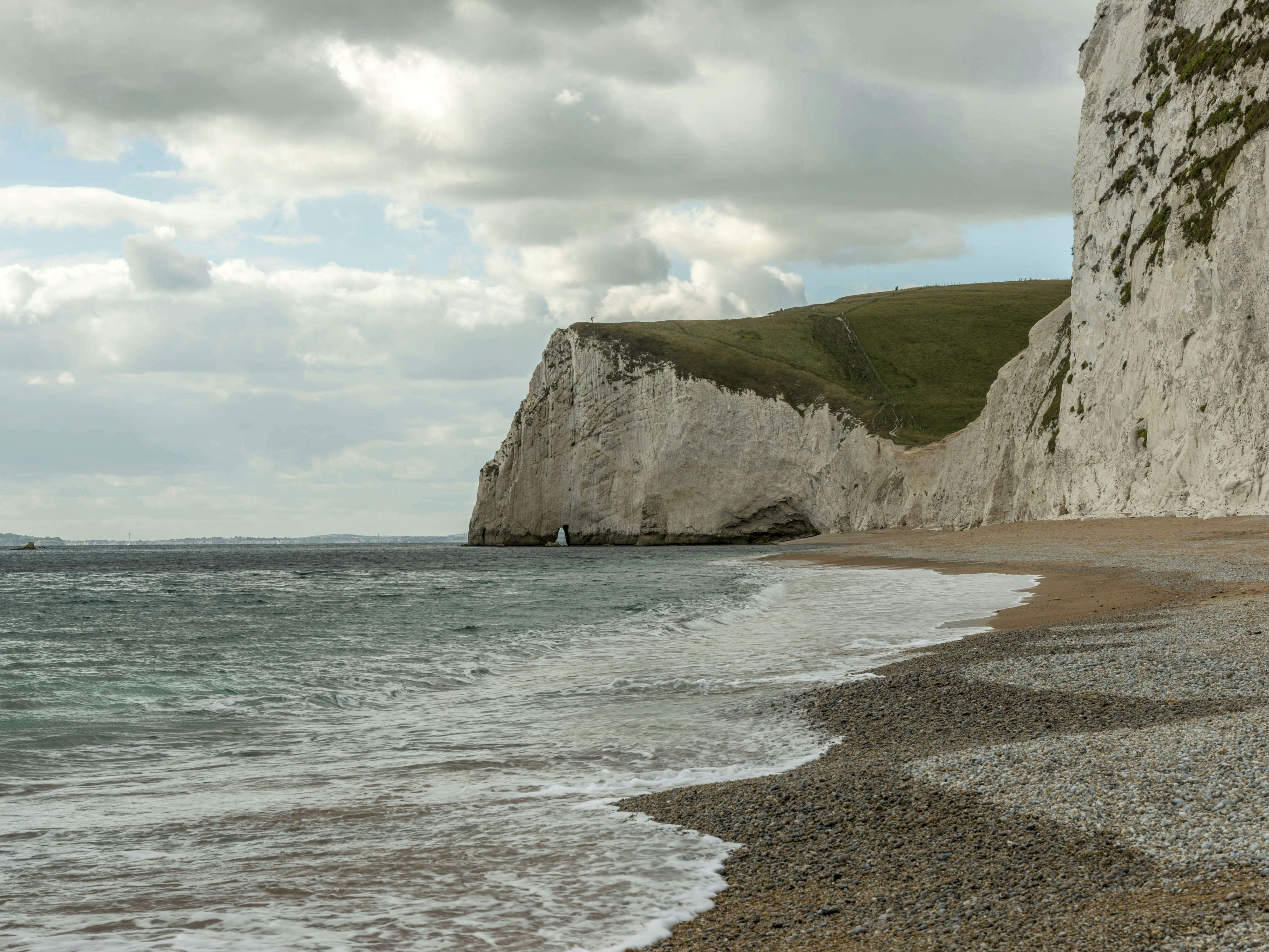
The extraordinary geology is the main attraction of the Jurassic Coast
All along the coast, this incredible history takes shape – literally – in the form of unusual rock formations and beautiful bays. The best-known attraction is Durdle Door, a 200ft-tall (60m) limestone arch over the sea linking two remote beaches. One of Dorset’s most popular spots, it’s best viewed from the South West Coast Path as you walk over the cliffs from Lulworth Cove, revealing a perfect semi-circle of sea enclosed by bright-white chalk cliffs.
Other geological highlights of the coastline include Old Harry Rocks – a line of chalk stacks that line up with the Needles on the Isle of Wight – and the unusual rock layers of Kimmeridge Bay. Also noteworthy is Chesil Beach, an 18-mile (29km) barrier beach linking the Isle of Portland with the mainland, forming a wildlife-rich brackish-water lagoon known as the Fleet.
The towering golden cliffs at West Bay were used as a backdrop for the popular British TV series Broadchurch, while the picturesque harbor and quaint seaside town of Lyme Regis lie at the heart of Dorset’s fossil-hunting history.
In East Devon, don’t miss the Orcombe Point Geoneedle in Exmouth, which marks the beginning of the Jurassic Coast World Heritage Site, or the distinctive red sandstone sea stacks in Ladram Bay.
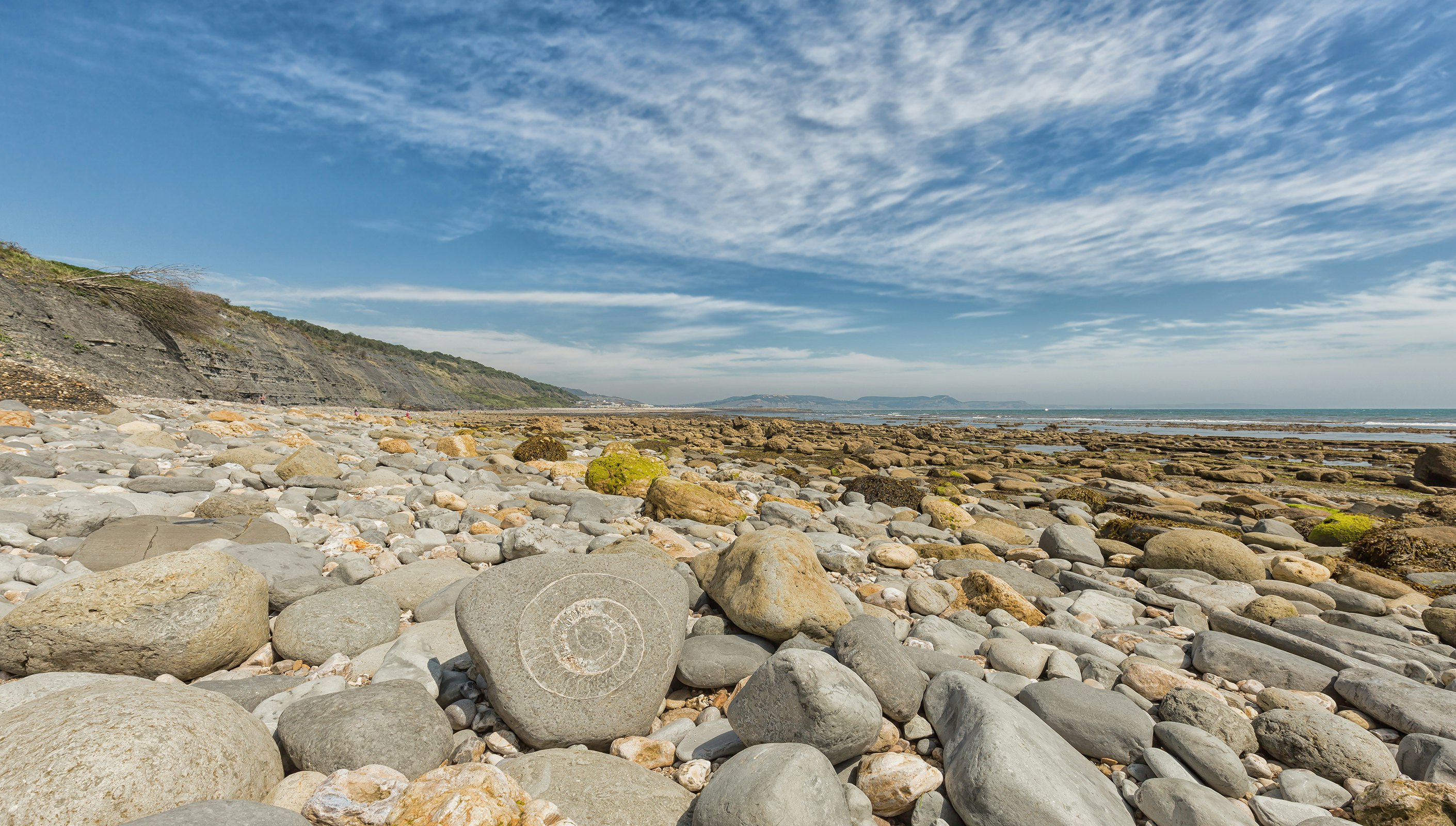
Look for fossils at Lyme Regis and Charmouth
Lyme Regis became a world-famous fossil hunting destination when paleontologist Mary Anning (portrayed by Kate Winslet in the 2020 film Ammonite) discovered a near-complete fossilized skeleton of an ichthyosaur, a large marine reptile, in around 1836. Today, the resort is still a popular spot for fossil collectors, with new finds being discovered all the time. Look out for the “Ammonite Pavement” on Monmouth Beach, where low tide exposes a rock shelf containing hundreds of fossils of these octopus-like shellfish.
Walk along the beach between Lyme Regis and Charmouth to spot fossils lying among the shingle. Be careful, though – the beach can sometimes be cut off at high tide, and the cliffs are dangerous in places, especially after rain. Amateurs are advised to book a guided fossil-hunting tour rather than going it alone; tours can be booked through the Charmouth Heritage Coast Centre or the Lyme Regis Museum, which also has extensive fossil displays.
Take a walk along the South West Coast Path
Running uninterrupted for 630 miles (1013km) from Minehead in Somerset to Poole Harbour in Dorset, the South West Coast Path is the UK’s longest National Trail, taking in the full 95 miles (153km) of the Jurassic Coast along the way.
Depending on your fitness and speed, and how much time you have available, you can walk the whole route or choose one or two sections for a shorter coast walk. I recommend trying the Golden Cap circular walk to climb the highest point on the south coast of England. Alternatively, hit the wild and rugged cliff paths around the Isle of Portland, or wander the coastal paths around the Isle of Purbeck, where you can explore disused quarries and unique wild-swimming spots.
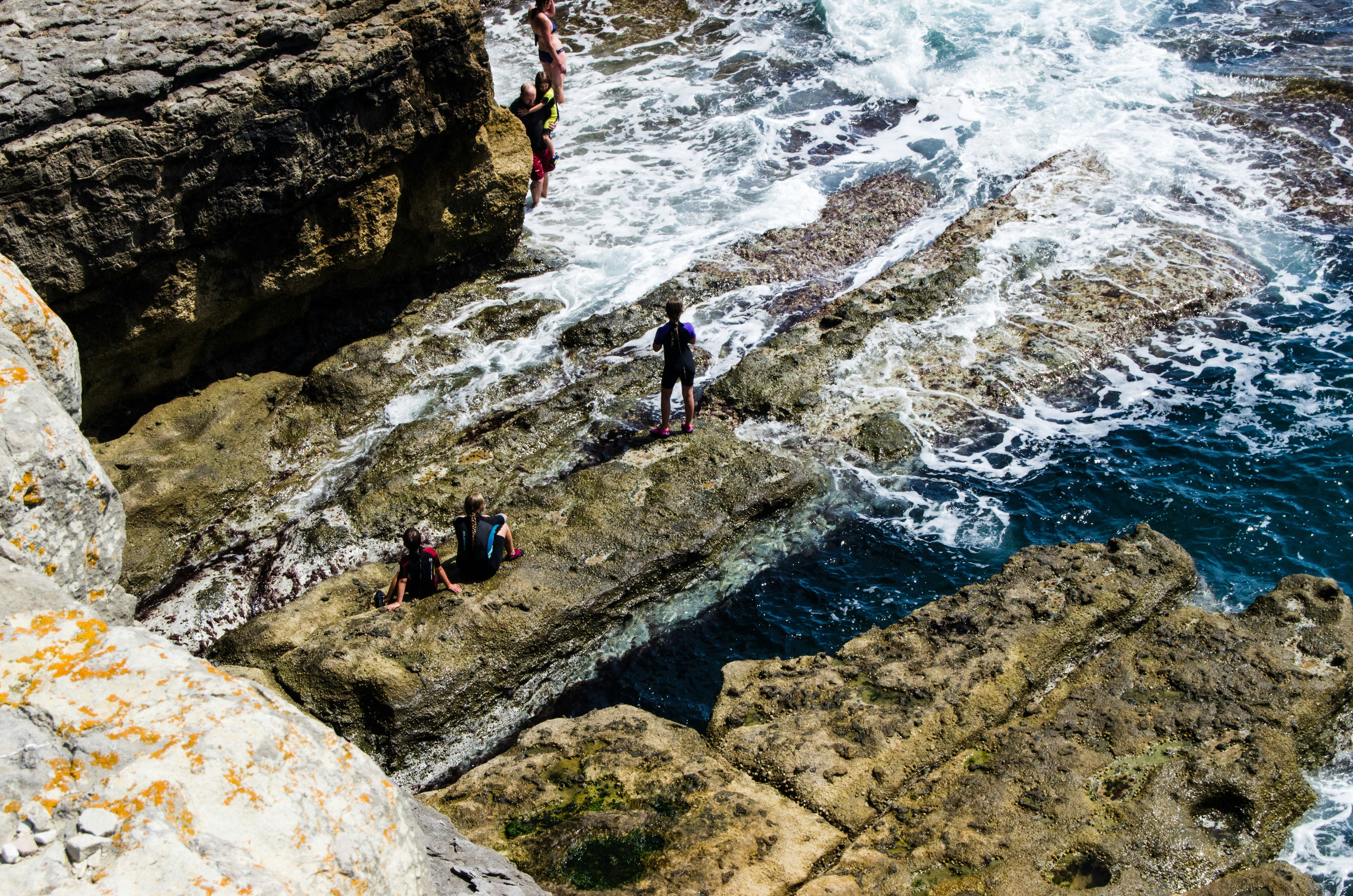
Cool off with a spot of wild swimming
Along the Jurassic Coast, experienced wild swimmers will find a wealth of exciting pools and hidden coves to plunge into. In Dorset, Chapman’s Pool and Worbarrow Bay offer remote beaches that can only be reached by walking.
For something a little different, head to the tidal pool at Dancing Ledge near Swanage, a man-made swimming pool that was blasted into a rock shelf in a former stone quarry in the 19th century for the enjoyment of local schoolchildren.
Snorkel with seahorses in Studland Bay
Studland Bay, just beyond the eastern end of the Jurassic Coast in Dorset, is one of the only known breeding sites for both the spiny and short-snouted seahorse, making it one of the UK’s best snorkeling sites. Since the tiny creatures are masters of disguise, patience is key and is often rewarded with sightings, particularly during summer. Approach slowly and take care not to disturb the seahorses or their habitat.
Make a splash at Kimmeridge Bay’s rock pools
The sweeping curve at Kimmeridge Bay on the Isle of Purbeck is part of a Marine Special Area of Conservation, making it an excellent location for snorkeling and scuba diving. But you can also explore this rich marine life on the beach itself.
The bay’s distinctive geometric rock shelves and ledges are littered with rock pools at low tide. It's a great day out for kids; don’t miss the Wild Seas Centre, a small, free museum on the slipway, where you can learn a little more about the local marine life.

Hop aboard the historic Seaton Tramway
Take a ride back in time on board the Seaton Tramway, a network of narrow-gauge heritage trams running through the Axe Valley in East Devon. As well as a taste of history, these colorful open-top trams offer brilliant views of the River Axe estuary and the Seaton Wetlands Local Nature Reserve. Keep an eye out for local birds and other wildlife, including kingfishers, herons, foxes and little egrets.
Get the adrenaline pumping with a water-sports adventure
Boasting a mix of sheltered bays and exposed beaches with great surf, the Jurassic Coast is the perfect destination for adventure. Thrill-seekers should try coasteering at Lulworth Cove for an adrenaline-pumping way to explore the cliffs and rocks. Or hop on a rigid inflatable boat (RIB) at Lyme Bay or Weymouth for a fast-paced tour of the seafront.
Old Harry Rocks, Durdle Door and Lulworth Cove are impressive backdrops for a spot of sea kayaking – though amateurs are advised to book a guided tour as currents can be challenging. For a gentler ride, Weymouth Bay, Studland Bay and Portland Harbour are more sheltered spots that are ideal for stand-up paddleboarding.
You can also try your hand at kitesurfing, windsurfing or sailing lessons at several locations along the coast (try Portland or Poole), or take a boat tour from any of the larger harbors for something less hands-on.
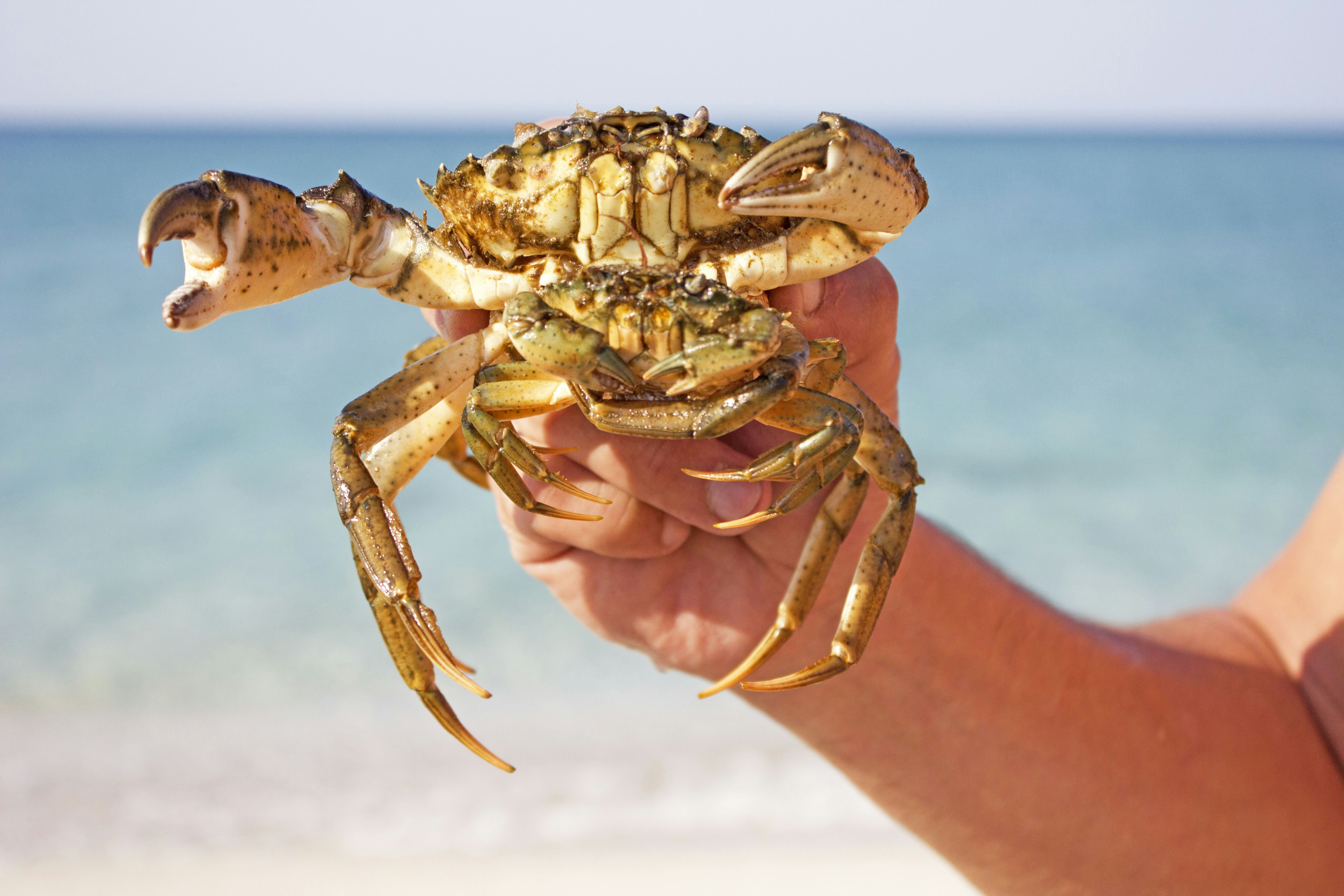
The best times to visit the Jurassic Coast
Summer offers the best chance of warm weather for beach days and water sports on the Jurassic Coast, as well as a busy program of festivals and events to entice visitors. Note that since this is the busy season, popular spots such as Bournemouth Beach and Durdle Door can be very crowded, especially during the summer school holidays.
While summer can sometimes be too hot for hiking, the spring and autumn shoulder seasons are ideal for coastal walks. Spring is especially lovely, with an array of wildflowers scattered across the grassy headlands and in nearby woodlands. These are also the best times of year to spot both wildlife and fossils, with scouring tides that wash fossils from the cliffs.
Numerous food and seafood festivals take place along the coast throughout spring and summer. One of the biggest is SEAFEAST, the Dorset Seafood Festival, held on Weymouth’s colorful harborside in September. The festival didn't run in 2025 due to repair works on the sea wall, but it is back in 2026.
Winter is overlooked by most tourists, but if you brave the unpredictable British weather, you’ll find there’s still plenty to do. Seals come ashore to breed during the autumn and early-winter months, so keep an eye out when walking (briskly) along the coastal paths.
How to get to the Jurassic Coast
The closest international airports are at Bournemouth, Exeter and Southampton, although most visitors from overseas will likely fly into one of the larger London airports. Trains serve coastal towns such as Axminster (near Lyme Regis) and Weymouth.
If you’re renting a car on arrival, it takes about two hours to drive to Bournemouth or Poole. From either of these towns, it’s easy to start a road trip along the coast, calling at whichever villages and attractions take your fancy.
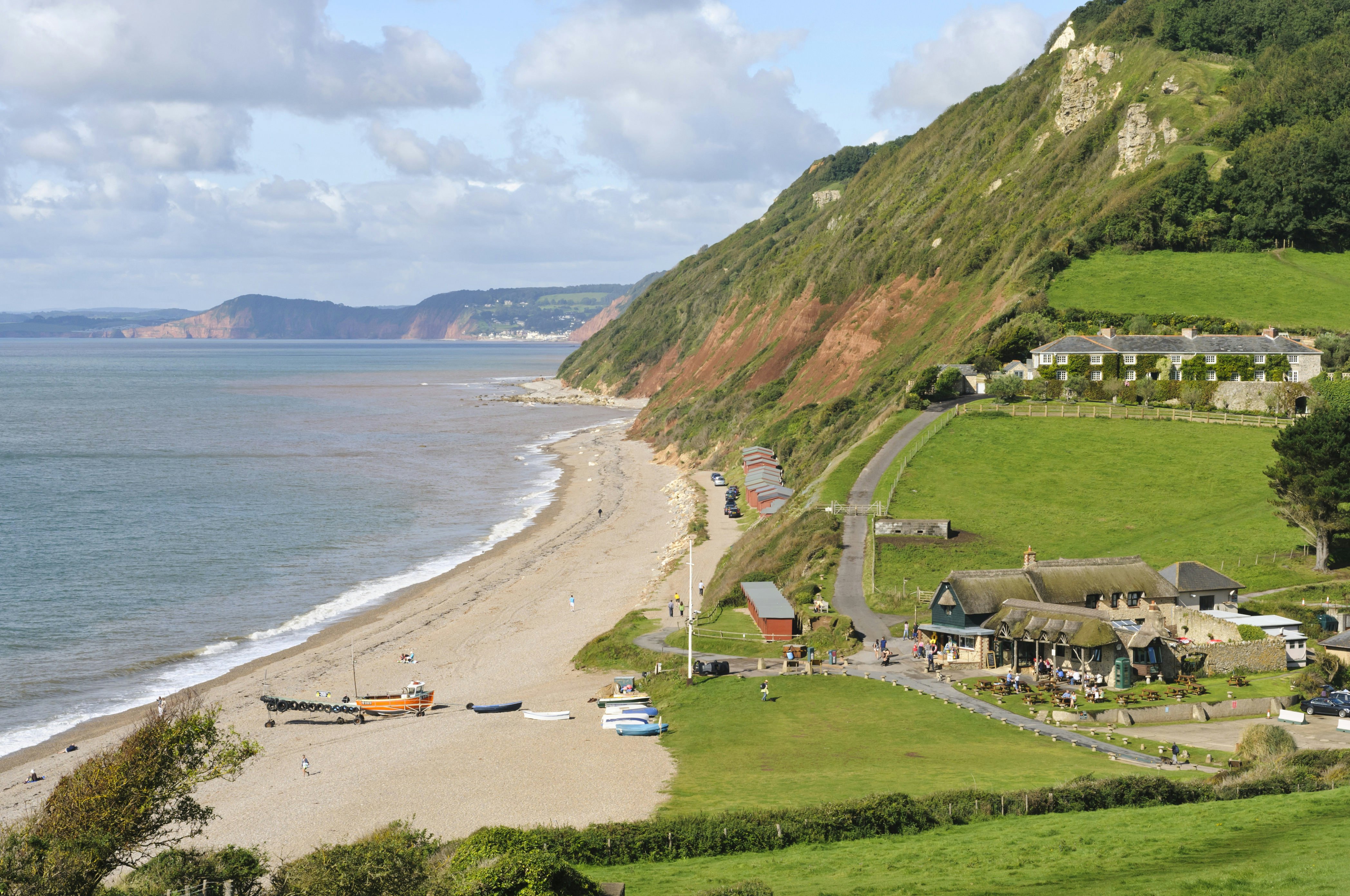
The most flexible way to explore the Jurassic Coast is by car
Possibly the easiest and most flexible way to explore the Jurassic Coast is by car, but bear in mind that some of the more remote destinations are accessed by narrow country lanes and may have limited parking.
Many of the busier towns, such as Weymouth and Bournemouth, operate park-and-ride services during summer. Use these to avoid getting caught in seaside traffic in the town centers, and fighting to find a parking space in town.
The Jurassic Coast also has an extensive public transport network for those who want to explore without a car. Bus services are fairly frequent and call at most of the major destinations. Run by First Bus, Jurassic Coaster buses (bus numbers X52, X53 and X54) run between Axminster and Poole, while Purbeck Breezer services (run by More Bus) connect Bournemouth and Poole with Swanage, Wareham and the Isle of Purbeck.
Taking public transport from London to the Jurassic Coast is easy
South Western Railway runs a service from London Waterloo to Weymouth that takes just under three hours. From Weymouth, you can use the X53 and X54 Jurassic Coaster buses from First Bus to travel to most towns between Poole and Axminster.
The train from London also stops at Bournemouth and Poole, placing you closer to the eastern end of the Jurassic Coast. From here, you can use the Purbeck Breezer services to reach Studland and the Isle of Purbeck.
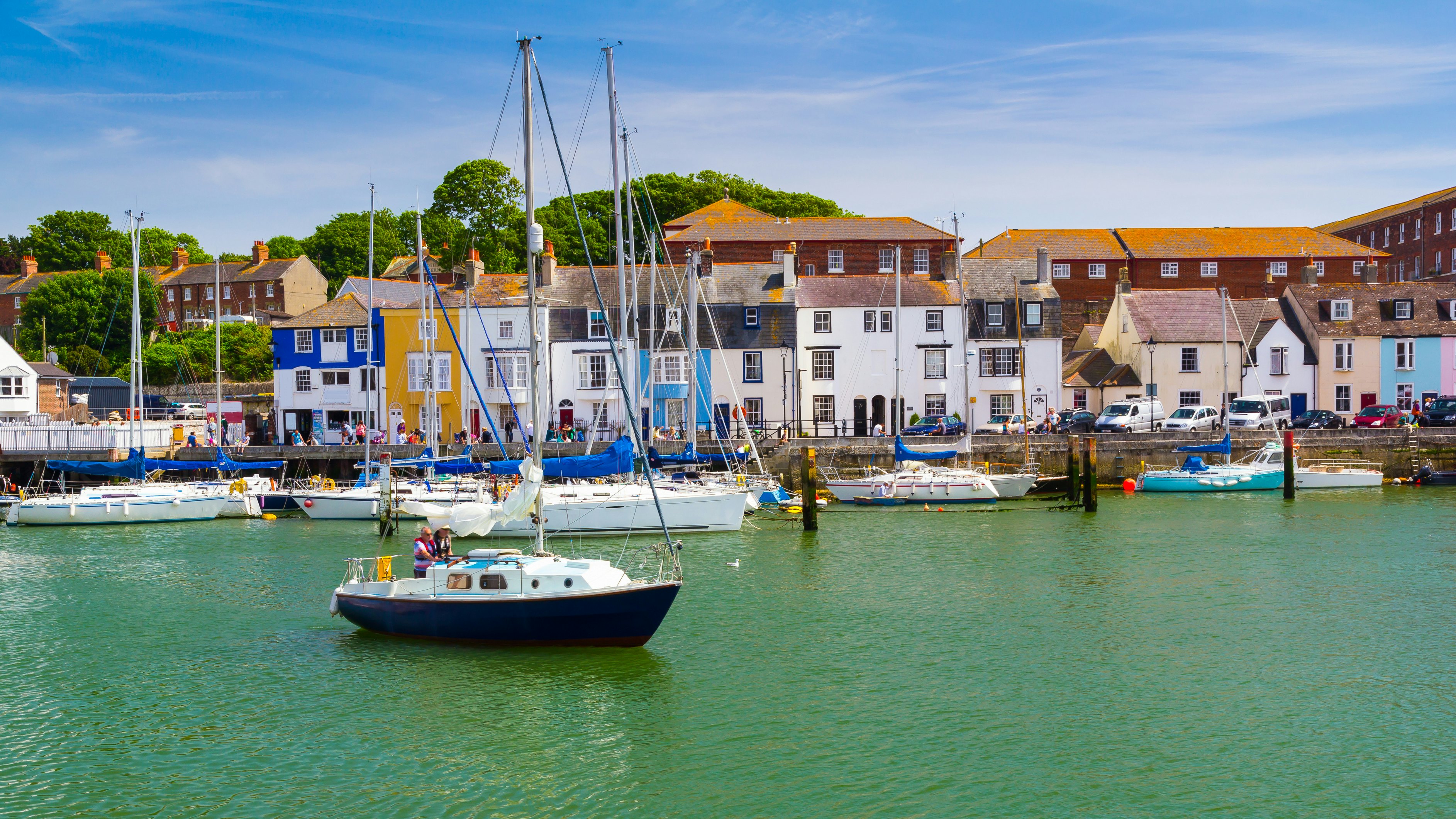
There are many accommodation options on the Jurassic Coast
With miles of coastline to explore, you’re spoiled for choice when it comes to choosing a place to stay on the Jurassic Coast.
The largest town in the area, Weymouth, is well connected to the delights of the coast in both directions, making it a good base for exploring. There are numerous beachfront hotels that are close to the bars and restaurants of the lively town center, while families might want to consider the popular Bowleaze Holiday Park and Spa on the town outskirts. For those on a budget, the clifftop campsite at nearby Eweleaze Farm (summer only) boasts some excellent views.
The quaint seaside town of Swanage is ideally located for exploring Studland Bay and the entire Isle of Purbeck, with accommodation options ranging from a YHA hostel to cosy B&Bs. In nearby Studland, luxury boutique hotel The Pig on the Beach is known for its top-quality restaurant and dazzling sea views.
Towards the eastern end of the Jurassic Coast, Lyme Regis is another popular seaside town with a range of hotels and accommodation options, while Sidmouth offers up the nostalgic grandeur of a Victorian seaside resort. Fans of quirky history will likely enjoy the Smuggler’s Inn at Studland, a cosy boutique inn and pub which was once a hangout for an infamous local smuggling gang.












